Outline
The Japan Pearl Export and Processing Cooperative Association was established as a commercial cooperative under Japanese law in September 1950 (Showa 25). At the time of its establishment, the global pearl market was immature and a sound market was needed. To meet these needs, the main purpose of the association is to ensure that high-quality pearls are smoothly circulated in the market at a stable price, so as to build a sound market. Since its establishment more than 70 years ago, the trade union has devoted itself to hosting bidding fairs and has made great contributions to the development of Japan's pearl industry. The combination is abbreviated as PEPCA, which is the abbreviation of the beginning of the trade union's English name, Japan Pearl Export and Processing Cooperative Association.
Member List
Both TASAKI and MIKIMOTO are members, and a total of 91 companies are represented by their members.
Special Pearls
Background and purpose of "Specially Selected Pearl" certification business

Pearl quality factors are mainly divided into Nacre, Luster, Shape, Blemish, and Color. "Specially Selected Pearl" is an evaluation given by PEPCA's top professional team after careful evaluation. The pearls are visually screened and carefully selected by a team of experts based on the factors of the pearls, and this title has been given to those evaluated and certified as being of the highest quality category as a result of comprehensive and rigorous quality evaluation.
The "Specially Selected Pearl" certification business will begin in May 2008. PEPCA began issuing a "Certificate of Specially Selected Pearl" in August 2010 to more clearly reflect the high-end quality and expensive value of "Specially Selected Pearl."

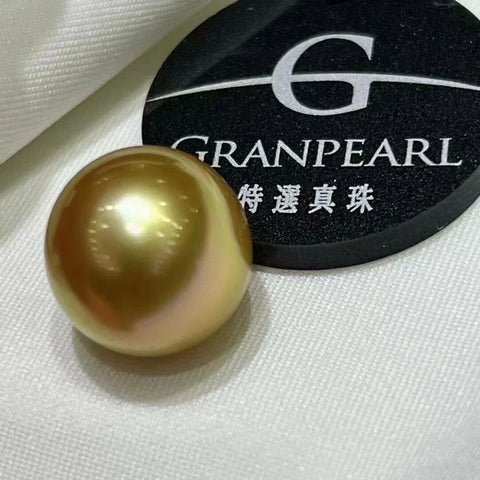
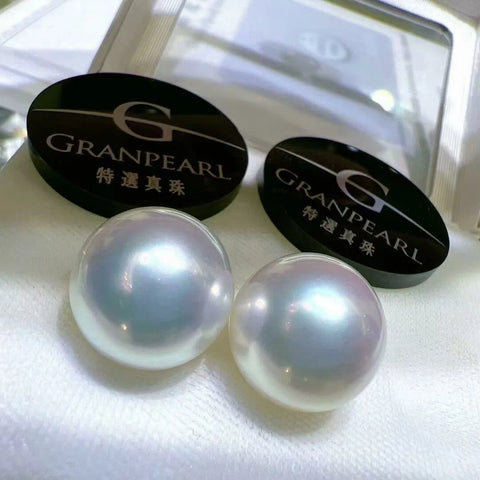

The background of the "Specially Selected Pearls" appraisal service is based on the widespread use of such terms as Hanadama in the pearl market in recent years. It has become increasingly difficult for the average consumer to determine what the highest quality pearls are. Specifically, the Japanese pearl industry has long referred to the highest-quality pearls as Hanadama. However, there is no clear definition of what constitutes a Hanadama in the pearl industry, and it is customary to refer to it as the highest quality. The absence of a quality standard for the term Hanadama in the pearl market in recent years has resulted in the emergence of a number of products that are formally certified as Hanadama but are not of the same quality as the original Hanadama. The absence of a quality standard for the term Hanadama in the pearl market in recent years has resulted in the emergence of a number of products that are formally certified as Hanadama but are not of the same quality as the original Hanadama. For example, there are some pearl products that are sold with "pearl products with a certificate of identification of flower pearls, etc. = the highest quality". In light of this situation, PEPCA has launched a full-scale "Specially Selected Pearls" appraisal service with the goal of restoring the original appearance of "Hanadama."
Classification of Specially Selected Pearls "SUPEARL'' and "GRANPEARL''
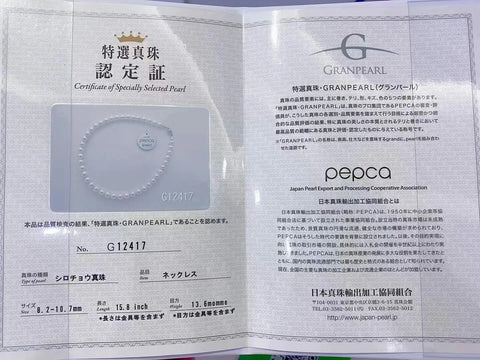
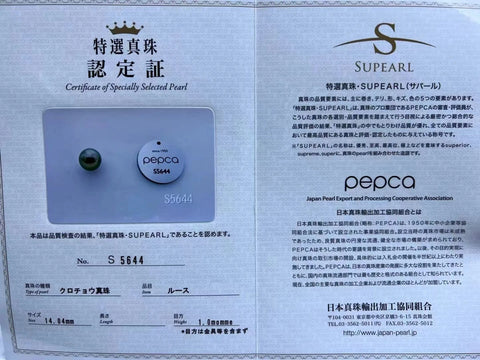
Since August 2017, the "Specially Selected Pearl" has been subdivided into two grades, "SUPEARL" and "GRANPEARL", with "SUPEARL" using a gold tag and "GRANPEARL" using a silver tag. In the new classification, the original "Specially Selected Pearl" are equivalent to the graded "GRANPEARL", while those of better quality and rarer than the "GRANPEARL" are called "SUPEARL". The "SUPEARL" pearls, which are even better and rarer than the "GRANPEARL", are the best of the best and have been carefully selected. Both "SUPEARL" and "GRANPEARL" are pearls of the highest quality.
The Specially Selected Pearls judging panel
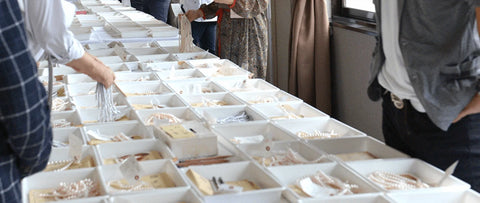

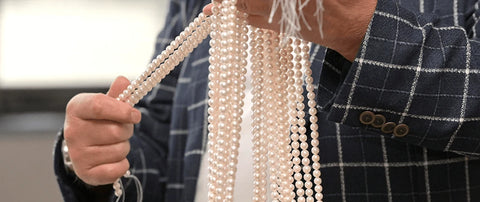
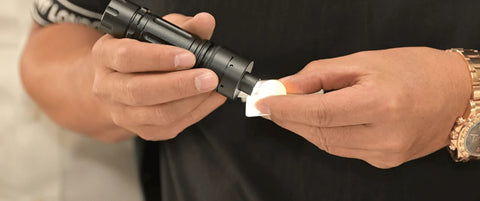
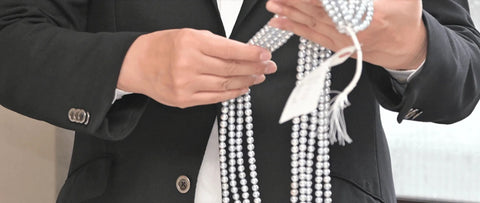
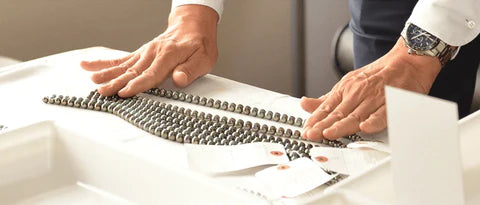

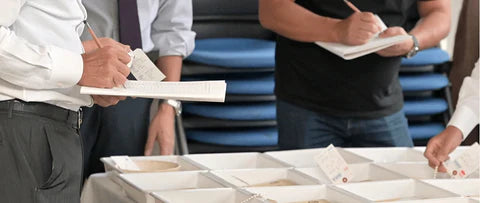
Types of pearls identified: AKOYA pearls, Tahitian pearls, golden and white south sea pearls.
Method of Review and Judgment: Visual examination.
Examination and appraisal: The most important feature of the examination and appraisal of "Specially Selected Pearl" is that it must be unanimously approved by at least six core PEPCA experts before the designation of the "Specially Selected Pearl" is certified.
In addition, all qualified pearls will be exhibited in the bidding meeting held by PEPCA on the following day, so that more bidders can participate in the competition. If the bidders have reservations about the "Specially Selected Pearl", PEPCA will start the re-evaluation process.'' This is also different from the general appraisal institutions, comprehensive more expert opinions, excellence is the "Specially Selected Pearl" appraisal system characteristics.''
The condition for the identification of "Specially Selected Pearl" is that all the members of the identification team pass.
Authentication certificate: The identification certificate is folded in half to B5 size.
In addition to the words "Certificate of Specially Selected Pearl", the identification certificate will also include the type, name, size (mm), length (inch), weight (momme), identification number, "SUPEARL" or "GRANPEARL" logo, PEPCA name, etc. The identification number is printed on a one-to-one "Specially Selected Pearls" plaque, administered by PEPCA.
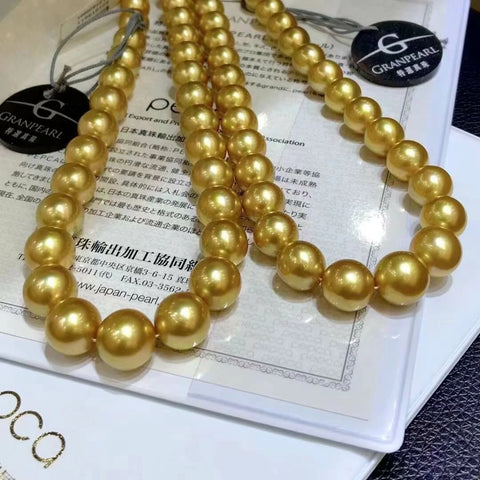
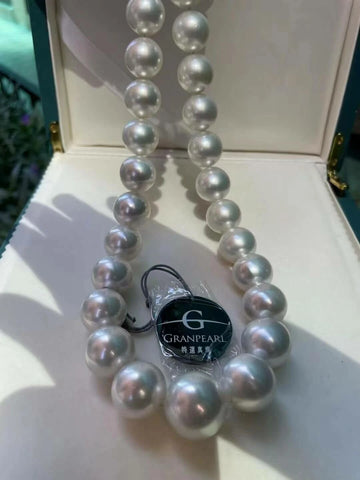
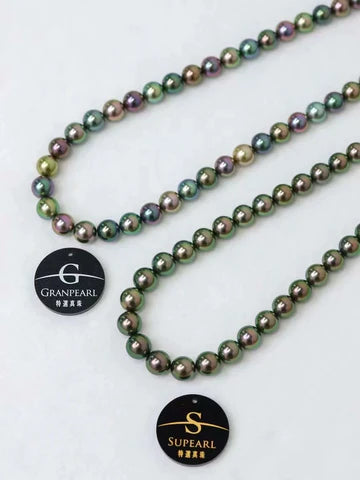

Pearl Quality
When evaluating the pearls mainly in shape, surface, colors, nacre to make a comprehensive evaluation. Size is not an important factor in rating the quality of a pearl, but it is an important factor in price evaluation. Pearls are a very difficult gem to evaluate, but we would like to introduce them to the general consumer as much as possible.
Shape
In terms of shape, the closer it is to a perfect round, the less it is produced, the rarer it is, and the higher its value. Various pearl shapes are produced depending on the type of pearl oysters, and the unique shapes often found in black pearls and white pearls are also very popular.
Scratch
Imperfection & Surface:
The dents, protrusions, and wrinkles on the surface of the pearl are called "natural imperfections". The dents on the pearls are likened to dimples. In terms of blemish quality, the fewer blemishes, the prettier the pearl, the higher the rating, the rarer the product.
Color
The quality rating of pearl color also varies greatly depending on the type of pearl. Among the different types of pearls, pearl colors that are extremely rare and produced in very small quantities tend to be of higher value.
Roll
Pearl Layers:
The "roll" of a pearl is a term that describes how the nacre is formed, not just the thickness of the nacre. The pearls formed by the good quality nacre show the deep brilliance that emanates from the inside of the pearls. For example, a pearl with a good winding thickness but no terry is affected by the quality of the nacre. Therefore, a pearl with a high reputation for winding is formed by a high-quality nacre, and the inside of the pearl has a deep luster.
TERI
Luster:
Teri reveals the luster and brilliance of the pearl. As previously stated, good winding reveals the interference color unique to the inside of the pearl. Interference color is a color seen through light refraction or transmission and is closely related to winding. Similar to "rolls." Products with a high Teri evaluation must be formed by a high-quality nacre and show pearls with a strong interference color inside the pearls.
Size:
Size is not a quality factor in pearls, but it is an important factor in price and rarity. The larger the size of the pearl, the lower the production and the higher the rarity.

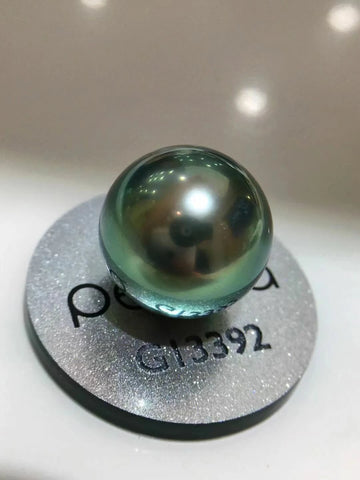
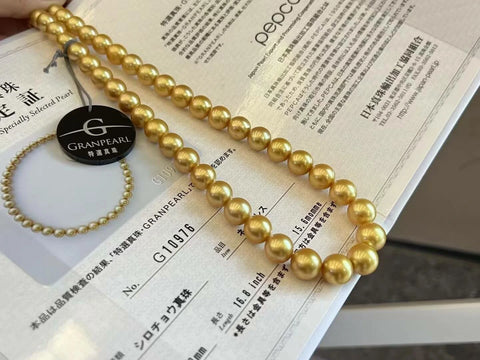

Pearl Type
This is a description of the production size, origin and color variation of the main pearls.
Akoya pearls: Pearls produced by pearl oysters. Produced mainly in sizes from 2mm to 11mm. Japan accounts for the majority of the production and is produced in China, Vietnam, and Korea, although production in other countries has declined slightly.
The majority of pearls produced in Japan are Akoya pearls, which are primarily produced in the prefectures of Nagasaki, Ehime, and Mie. Colors are roughly divided into white, pink, green, rose, cream, yellow, gold, blue, and so on, and can be round, semi-round, semi-baroque, baroque, and other shapes.
Tahitian Pearl: Pearls made from black pearl oysters. The production sizes are mainly 7mm to 16mm. Produced primarily in French Polynesia (Tahiti), but also in the Cook Islands, New Caledonia, and the Japanese islands of Ishigaki and Iriomote in Okinawa Prefecture. They come in a variety of colors and shapes, including round, oval, button, teardrop, round, and baroque, as well as black, blue, green, red, brown, yellow, and white.
Golden & White south Sea Pearls: Pearls made from Pinctada maxima. Produced mainly in sizes from 8 mm to 18 mm. Australia, Indonesia, and the Philippines are the primary producers, but it is also produced in Malaysia, Myanmar, and Thailand, as well as in Japan in Amamioshima, Kagoshima Prefecture, and Okinawa Prefecture. The colors are white, silver, blue, gold, yellow, cream, etc. The shapes are round, oval, button, teardrop, round, baroque, etc. Pinctada maxima characteristics vary depending on origin, with Australian pearls being the largest in overall size, and white and silver pearls being the most common colors. Indonesian and Philippine products are smaller in size than Australian products, but are characterized by a high percentage of gold and yellow production. As mentioned above, the distinctive pearls of Pinctada maxima are based on the origin's marine environment.
Others: There are also natural pearls such as mabe pearls, known as semicircular pearls, which are mainly produced in Amami Oshima, Kagoshima Prefecture, as well as Avalon pearls (abalone) and conch pearls.

Leave a comment